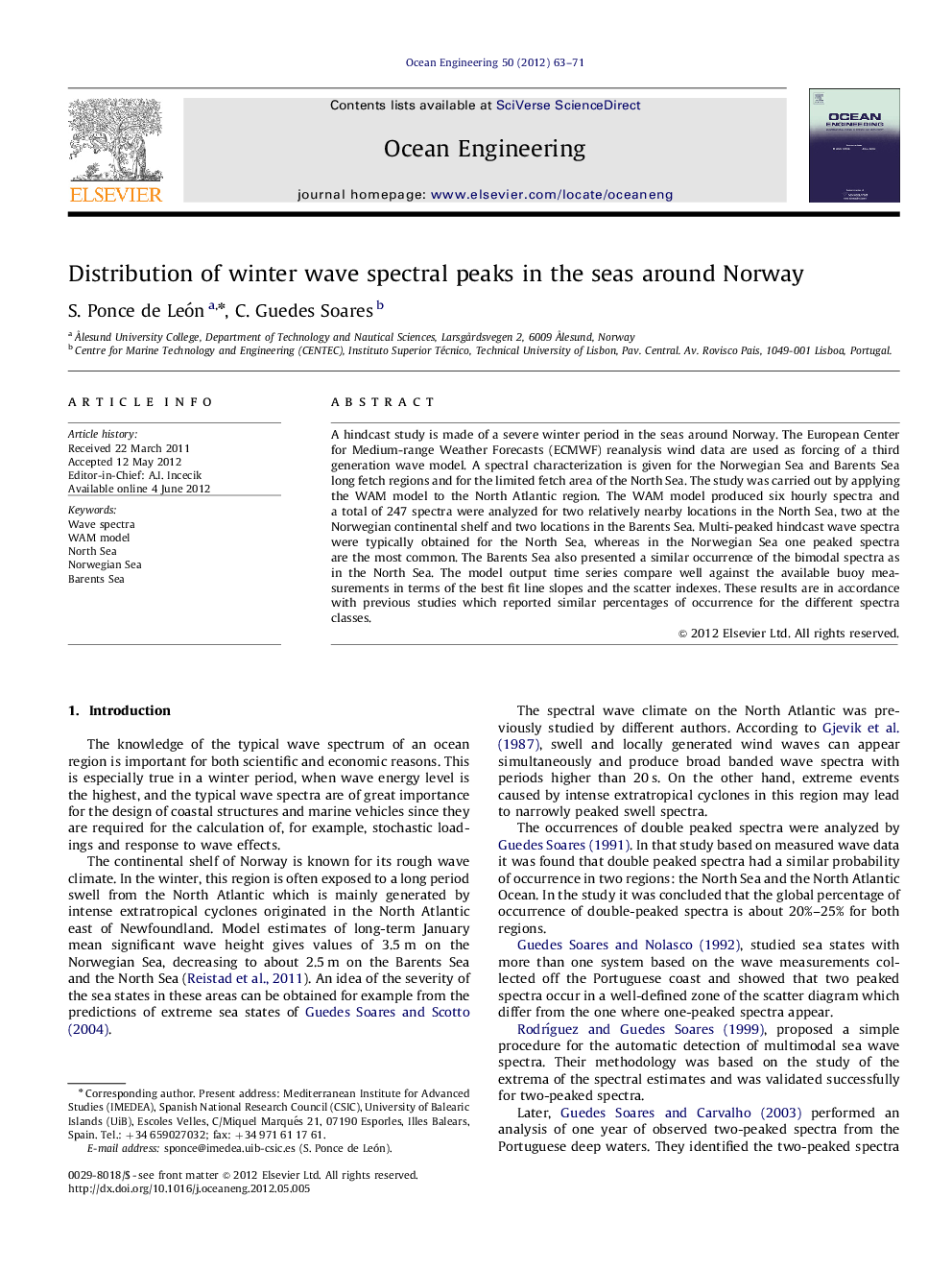| Article ID | Journal | Published Year | Pages | File Type |
|---|---|---|---|---|
| 1726227 | Ocean Engineering | 2012 | 9 Pages |
A hindcast study is made of a severe winter period in the seas around Norway. The European Center for Medium-range Weather Forecasts (ECMWF) reanalysis wind data are used as forcing of a third generation wave model. A spectral characterization is given for the Norwegian Sea and Barents Sea long fetch regions and for the limited fetch area of the North Sea. The study was carried out by applying the WAM model to the North Atlantic region. The WAM model produced six hourly spectra and a total of 247 spectra were analyzed for two relatively nearby locations in the North Sea, two at the Norwegian continental shelf and two locations in the Barents Sea. Multi-peaked hindcast wave spectra were typically obtained for the North Sea, whereas in the Norwegian Sea one peaked spectra are the most common. The Barents Sea also presented a similar occurrence of the bimodal spectra as in the North Sea. The model output time series compare well against the available buoy measurements in terms of the best fit line slopes and the scatter indexes. These results are in accordance with previous studies which reported similar percentages of occurrence for the different spectra classes.
► Distribution of wave spectral peaks in the North Sea, Norwegian and Barents Seas was assessed. ► WAM 4.52 simulations were performed under winter conditions. ► Highest occurrence of bimodal spectra was obtained in the North Sea.
